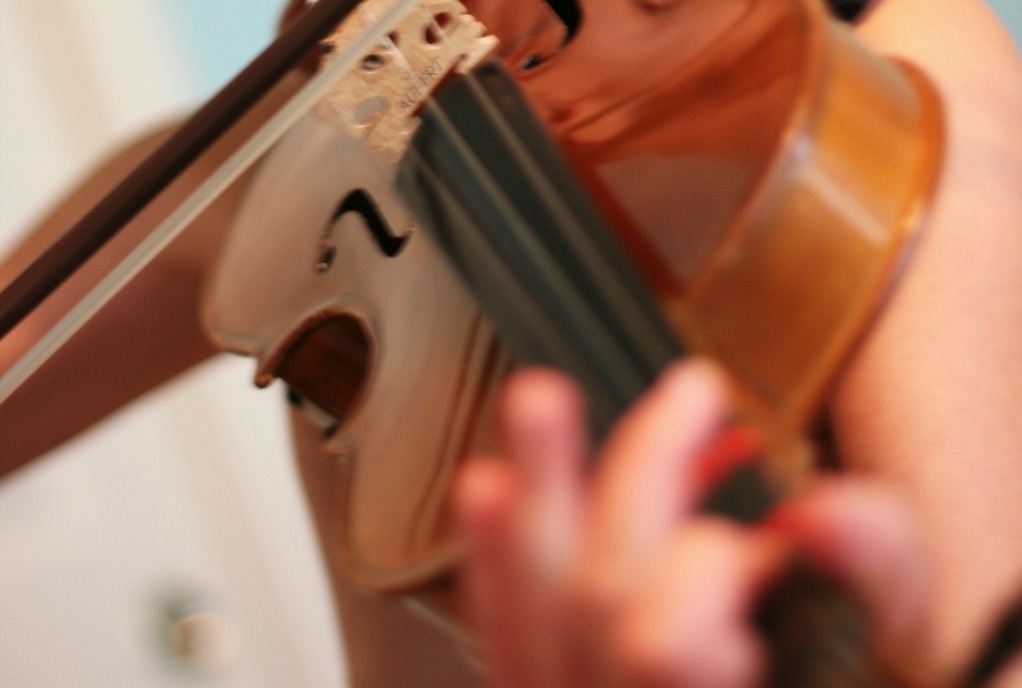
One May evening last year, I found myself driving on Martin Luther King Jr. Boulevard in South Los Angeles, away from Exposition Park towards the neighborhood of West Adams. My SUV carried not only me but also 16-year-old Miguel, his 13-year-old brother Ernesto, a trumpet, a clarinet, several stacks of sheet music, and a case containing the baton I have used to conduct the Youth Orchestra of Los Angeles (YOLA) for the past five years.

Strictly speaking, my job description as conductor of YOLA did not include providing transportation services; this area of responsibility was born of the brothers’ concerns over having their instruments stolen while riding Metro buses. Students in the program have repeatedly lost instruments due to theft, and for these two, getting shuttled home by me a few times a week seemed like an elegant solution. Their instruments endured, and I gained a new family and an appreciation for the impact that music programs can have on young people.
The importance of music education to developing minds is considerable. Recent studies indicate that such education may help close the academic gap between rich and poor students. Music instruction improves children’s communication skills, attention, and memory. And according to a 2012 report by the National Endowment for the Arts (NEA), at-risk students who have access to the arts in or out of school tend to have better academic results, better workforce opportunities, and greater civic engagement.
My stint as YOLA’s conductor-cum-taxi driver allowed me to witness astounding changes in the students I worked with over five years. During this time, their communication and social skills developed and they became strongly identified with the orchestra—as an activity, and as a community. Perhaps most importantly, they learned to work together to achieve shared goals. This extended beyond the students themselves to their entire families, who became so invested in the program. Families regularly made significant sacrifices, including one family that commuted more than hour each way, six days a week, to ensure their children continued in the program and reaped its full rewards.
Yet in spite of the growing body of evidence supporting music education as a lifeline for at-risk youth, many school districts have bowed to financial pressure and focused their resources on implementing Common Core standards and boosting test scores. Access to music education is increasingly limited to only those families who can afford it.
It’s not surprising then that my work as a conductor—not only in L.A. but as assistant conductor of the Pasadena Symphony and as music director and conductor of the Tulare County Symphony—is increasingly about expanding music education programs for youth.
On a rainy day last December, I drove to Woodville Elementary, three hours north of Los Angeles in Tulare County, to discuss launching an afterschool music program to better serve youth in impoverished rural areas. Huddled around a conference table in a portable classroom, Tulare County Symphony staff vetted ideas with Woodville Superintendent Dago Garcia and Daren Davis, executive director of ProYouth HEART, a non-profit organization that delivers high quality after-school programs at socio-economically disadvantaged school sites.
Woodville’s student population of 500 consists mainly of children of farmworker families, many of whom live in the neighboring Woodville Farm Labor Camp. Together, the symphony and the school district have set a goal of raising the funds necessary to offer all second graders the opportunity to play the violin, starting in fall 2015. This would serve as a pilot program for delivering music education to rural communities throughout the region.
Why here? Because this is where the need is the greatest. Of Tulare County’s 44 school districts, 41 are rural and impoverished. There are too few opportunities for students to have artistic or cultural experiences. Roughly the size of Connecticut, Tulare County contains some of the most intensive agricultural production land within the U.S., but its residents rank among the poorest in the nation according to the U.S. Census Bureau. The Economist has dubbed this region “The Appalachia of the West.”
The Woodville pilot is a part of a larger initiative launched by the Tulare County Symphony Association earlier this year to better serve youth from rural areas. Since its inception in 1960, the Symphony has held concerts for school children. This year we performed nine concerts for just under 9,000 elementary school students throughout the county, and we are pursuing funds to develop a classroom toolkit that non-music teachers can use to incorporate music into the curriculum. In addition, with $3,200 in Good Works Funds from the Tulare County Board of Supervisors, we now set aside a block of 25 seats at every concert for at-risk youth and youth from rural schools. You have to start somewhere, and this is a start.
But school budget trends work against us. In recent years, the amount of music education offered to local public school students has drastically decreased. Even when youth concerts are offered, many schools don’t have the transportation budgets to get kids there. Arts education doesn’t have the dedicated funding streams of other education programs, like special education or after-school programs.
That leaves private funding. One of the primary challenges rural areas face is that several of the foundations with the greatest capacity are in cities and don’t accept applications. You have to wait for them to come to you. This is a catch-22 for rural schools and arts organizations, which compete for resources with amazing arts organizations that exist right in funders’ own backyards. And it doesn’t help that in rural areas with high poverty, the arts are (understandably) a lower priority. When competing for local charitable dollars with a child’s need for food, shelter, and access to basic medical care, the arts cannot petition for funds from a position of strength.
But this reinforces our appeal to California’s philanthropic community. If you don’t support the arts—and equal access to them regardless of geography—who will?




Send A Letter To the Editors